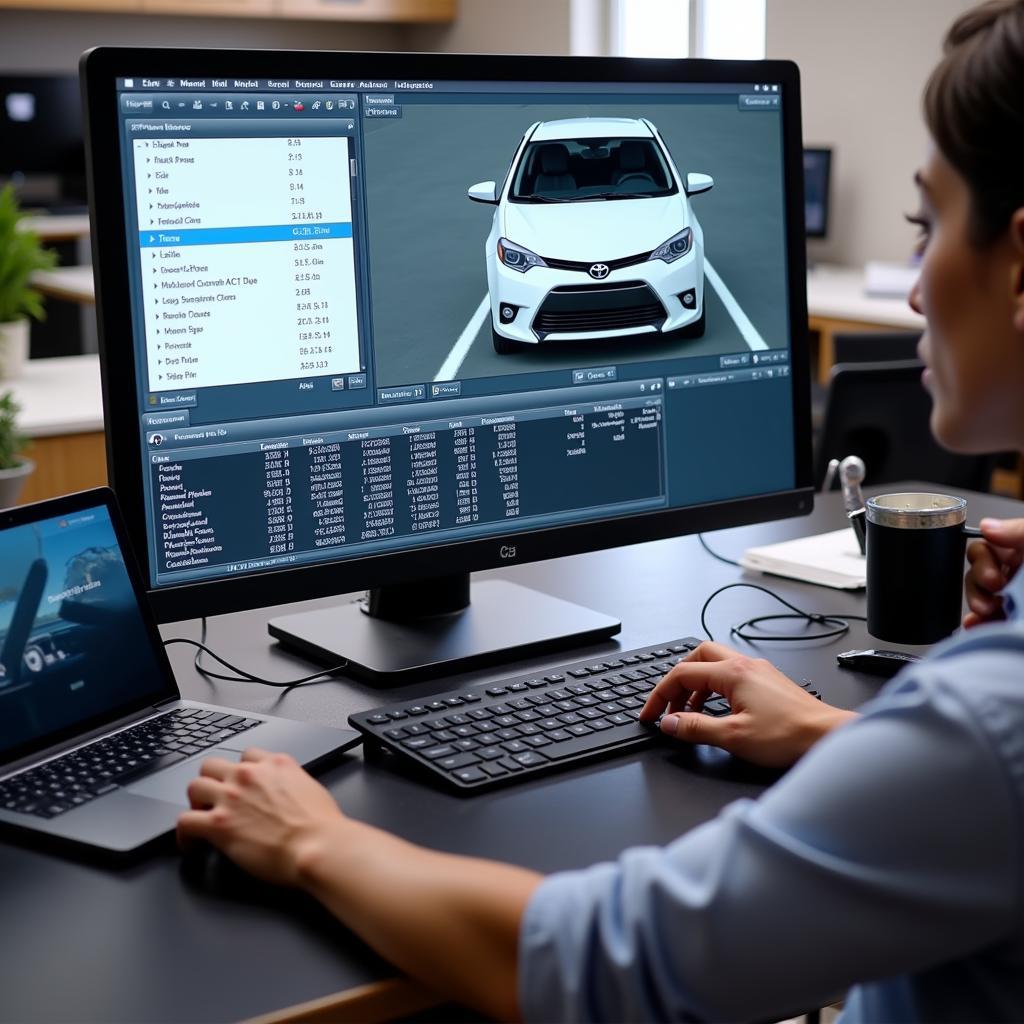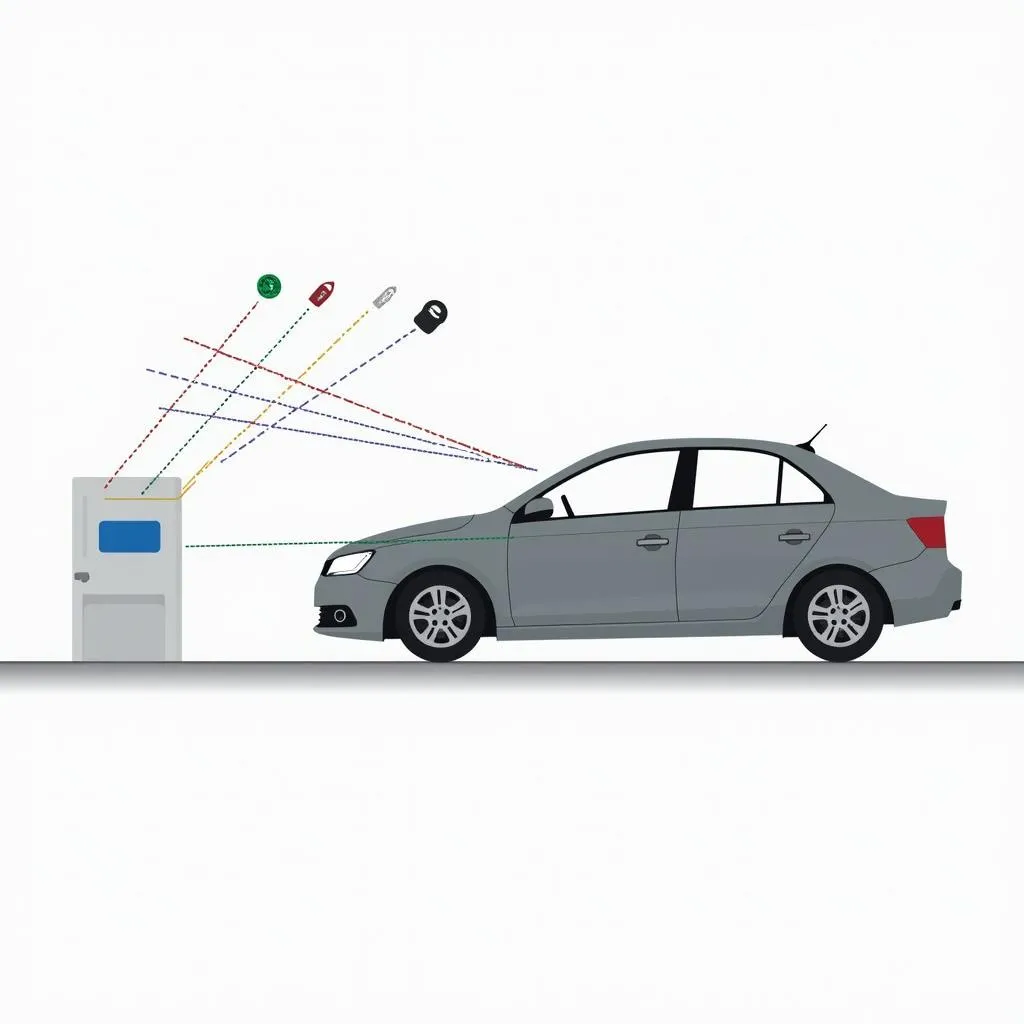The EPC warning light, short for Electronic Power Control, can be an unwelcome sight on your Seat Ibiza 2007 dashboard. It signals a potential issue within your car’s electronic throttle control system, which manages essential functions like fuel injection, throttle position, and cruise control. While seeing this light illuminate can be concerning, it doesn’t always mean a trip to the mechanic is immediately necessary. This comprehensive guide will delve into the possible causes of an EPC warning light on a 2007 Seat Ibiza, equip you with troubleshooting steps, and discuss potential solutions to get you back on the road quickly and safely.
Understanding the EPC System
Before diving into troubleshooting, it’s beneficial to understand what the EPC system encompasses. In your 2007 Seat Ibiza, the EPC system acts as the brain behind your engine’s performance. It monitors various sensors related to throttle position, engine speed, and other vital parameters. When the EPC control unit detects an inconsistency or malfunction, it triggers the EPC warning light, alerting you to a potential problem.
Common Causes of an EPC Warning Light
Several factors can contribute to the EPC warning light illuminating in your Seat Ibiza 2007. Here are some of the most common culprits:
- Faulty Throttle Position Sensor: This sensor relays information about the position of your accelerator pedal to the engine control unit. A malfunctioning sensor can disrupt the fuel-air mixture, leading to performance issues and triggering the EPC light.
- Malfunctioning Brake Light Switch: Believe it or not, your brake light switch plays a role in the EPC system. A faulty switch can send incorrect signals to the ECU, causing the EPC warning light to illuminate.
- Vacuum Leaks: Leaks within the engine’s vacuum system can disrupt air intake and pressure, impacting engine performance and potentially triggering the EPC warning light.
- Faulty Mass Air Flow (MAF) Sensor: The MAF sensor measures the amount of air entering the engine. An inaccurate reading from a dirty or faulty MAF sensor can disrupt the fuel-air mixture, leading to poor engine performance and a lit EPC light.
- Issues with Spark Plugs or Ignition Coils: Worn spark plugs or faulty ignition coils can cause misfires, interrupting the smooth combustion process and potentially triggering the EPC warning light.
Troubleshooting an EPC Warning Light
While consulting a qualified mechanic specializing in Seat vehicles is always recommended for a definitive diagnosis, here are some troubleshooting steps you can attempt yourself:
-
Check Your Brake Lights: A surprisingly common cause of an EPC warning light is a malfunctioning brake light switch. Ensure all your brake lights are functioning correctly. If you find a blown bulb or unresponsive lights, replacing the brake light switch might resolve the issue.
-
Inspect for Vacuum Leaks: Carefully examine the hoses and connections within the engine bay for any signs of cracks, loose clamps, or damage. A hissing sound when the engine is running can also indicate a vacuum leak. Addressing any leaks found can potentially resolve the EPC warning light.
-
Inspect the Throttle Body: With the engine off, locate the throttle body. It’s typically connected to the air intake hose. Visually inspect for any dirt or debris buildup. Using a throttle body cleaner and a clean cloth, carefully clean the throttle plate and the surrounding area.
 Cleaning the throttle body on a 2007 Seat Ibiza
Cleaning the throttle body on a 2007 Seat Ibiza
-
Check the Air Filter: A clogged air filter restricts airflow to the engine, potentially impacting performance and triggering warning lights. Inspect your air filter and replace it if it appears dirty or clogged.
-
Scan for Trouble Codes: If the issue persists, using an OBD-II scanner to read the Diagnostic Trouble Codes (DTCs) stored in your car’s computer can provide more specific insights into the problem. You can purchase an OBD-II scanner online or at most auto parts stores.
“It’s crucial to remember that attempting DIY repairs requires caution. If you’re uncomfortable working on your vehicle or unsure about a specific step, it’s always best to seek professional assistance.” – John Miller, Certified Automotive Technician
Seeking Professional Help
If your troubleshooting efforts don’t pinpoint the cause of the EPC warning light or you’re uncomfortable performing the necessary repairs, it’s essential to consult a qualified mechanic specializing in Seat vehicles. They possess the expertise, tools, and diagnostic equipment to accurately diagnose and address the underlying issue.
Prevention Tips
While not all EPC warning light occurrences are preventable, proactive car care can minimize the risk:
- Regular Maintenance: Adhering to your Seat Ibiza’s recommended maintenance schedule, including spark plug replacements, air filter changes, and throttle body cleaning, can prevent issues that might trigger the EPC light.
- Quality Fuel: Using high-quality fuel from reputable gas stations can help keep your engine clean and running smoothly, potentially avoiding sensor issues.
- Address Warning Lights Promptly: Ignoring warning lights, even if your car seems to be running fine, can lead to more significant problems down the road. Address any warning lights promptly to catch potential issues early.
Conclusion
An illuminated EPC warning light on your Seat Ibiza 2007 doesn’t have to spell disaster. Understanding the potential causes and performing basic troubleshooting steps can help you address the issue effectively. Remember, when in doubt, seeking professional assistance from a qualified mechanic specializing in Seat vehicles is always the safest course of action.
Frequently Asked Questions
- Can I drive my Seat Ibiza with the EPC light on?
While you might be able to drive for a short distance, it’s not advisable. The EPC light signals a potential issue that could impact your car’s performance and safety. It’s best to address the problem as soon as possible.
- Is the EPC light related to the check engine light?
While both lights indicate potential engine-related issues, they are not directly related. The EPC light focuses on the electronic throttle control system, while the check engine light has a broader scope.
- How much does it cost to fix an EPC light issue?
The cost varies widely depending on the underlying cause. A simple sensor replacement might cost a few hundred dollars, while more complex repairs could be more expensive.
- Can a faulty battery cause the EPC light to come on?
While less common, a weak or failing battery can sometimes cause various electrical gremlins, potentially including an illuminated EPC light.
- How often should I clean my throttle body?
It’s generally recommended to clean your throttle body every 30,000 to 50,000 miles or as part of a major tune-up.


